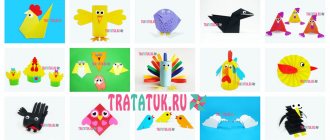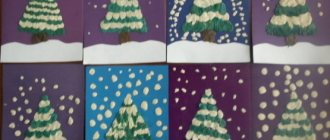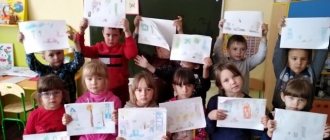Outline of a rhythm lesson for preschool children (5 years old)
Transcript
1 Municipal budgetary educational institution of additional education for children Palace of Creativity for Children and Youth of the Tolyatti Urban District Outline of a lesson in rhythm for preschool children (5 years old) Completed by Olga Mikhailovna Skopintseva, additional education teacher Tolyatti 2015
2 Outline of a rhythm lesson for preschool age (5 years). Subject. “Simple movements in children's dance” Goal: developing the ability to convey a musical image in plastic, using the listed movements: walking, running, jumping movements. Objectives: - Educational: teach the correct execution of movements (walking, running, jumping movements). Learn a dance fragment using these movements. — Developmental: develop flexibility and mobility of joints and ligaments. Improve the ability to perceive music and express it motorically. - Educational. Fostering interest and love for music, enriching the listening experience with musical compositions diverse in style and genre. Location of the lesson: choreography class. Set of equipment: mirrors, rugs, stereo system, projector, laptop, screen. Progress of the lesson. Organizational stage (2 min). Teacher: Invites students into the hall, the children take their places. We begin the lesson with a bow (greeting). The teacher informs the topic, purpose and objectives of the lesson. - Today in class we will get acquainted with such dance movements as walking vigorously, calmly, on half toes; running is light, sharp, springy; jumping movements on two legs in place, with advancement, various types of gallop. I suggest watching the video presentation so that you can clearly see the features of the correct execution of these movements. Preparatory part (8 min).
3 Music M. Starokadomsky “Joyful Travelers” 1 figure 1 verse Children stand one after another Walking one after another with a brisk step in a circle Chorus: I.P. standing facing in a circle. For the words “Tra-ta-ta” - 3 claps on the right side of the head. Repeat 3 claps on the left. To the words “We are taking the cat with us” - jump on two legs in place To the words “siskin” - bend forward, hands back with a “tail”, “dog” - squat slightly, stretch your arms forward in front of you “Petka the bully” - march in place of the “monkey” - tilt to the right, arms bent at the elbows, hands on the belt, “parrot” - tilt in the same position to the left, “here” - stretch your arms forward “what kind of company” - draw a circle in the air with your hands (up, in side, down) Repeat the last phrase, same movements, at the end step forward. 2 figure 2 verse Children move in a circle, lightly running on the floor with their fingers. Chorus movements are the same 3rd figure 3rd verse Chorus: gallop in a circle facing the center of the circle, hands on the belt Chorus: movements are the same. On the last chord, jump in place, arms up to the side. Main part (10 min). Exercises in the middle of the hall. Children stand on the mats, each in their own place.
4 Complex “Puppets” 1. Exercises to develop posture. The puppeteer pulled the strings of the back straight and elongated; I let go and the dolls fell, their backs relaxed. Repeat 4 times. 2. Exercises for hands. They gave the doll a ball in his hands, (preparatory position of the hands) They force him to lift it. (1st position) Carries upward, then throws, (3rd position) From below lifts again (2nd position). 3. Exercises for legs. We put the doll in a box and tied the legs together with a thread (6th position). The doll does not want to stand, it wants to dance. I tore the threads, first the toes (1st position), then the heels (2nd position). But then she stood up properly (6th position). Game of Princess and Old Lady Let's show how princesses walk. And now how old women walk. To the music, call Princesses (with a straight back, raised nose), then old ladies (hunched over with a wand). 4. Learning “ba I.P. 6th position Look at the shoes: (we stretch our right foot toe forward) Real pictures, (we return the foot to the first position) And the lacing, no matter where, (we stretch our left foot toe forward) And they are always polished. (return the leg to the jump) 5. Learning the “saute” jumps. “Grasshopper” Who is jumping in the grass Right on my hand?
5 Jump-jump, jump-jump, What's your name, my friend? I'm a mischievous grasshopper! I've been used to jumping since childhood. The coach gave me a five. So it’s a reason to jump. Ground gymnastics (7 min.). Stretching. Exercise 1. Sit on your knees, lie with your back on the floor, supporting your body with your arms, and then stretch them out. Go back. Ex. 2. Sit down, stretch your legs forward, bend into a pike, sit in the first position. Ex. 3. Get on your knees and, bending back, take the insteps with your hands. Bend over strongly, slightly bending your elbows and pushing your taut belly forward. Return to your knees and place your hands on the floor. Ex. 4. In the widest second position, try to touch your knee (as far as possible) to the floor without bending the other leg (ultimate “meniscus” control) and return to the position. Ex. 5. Lie on your back with your legs bent (with your ankles extended). Rise and fall, simultaneously lifting your shoulder blades and knees off the floor (bridge). Summing up the lesson (3 min). Write to each child in a notebook “Well done!” References 1. Burenina A.I. Rhythmic mosaic. St. Petersburg Zaporozhets A.V. Development of voluntary movements. M., Ilyina G.A. Features of the development of musical rhythm in children // Questions of psychology www. Horeograf.com
6 .



